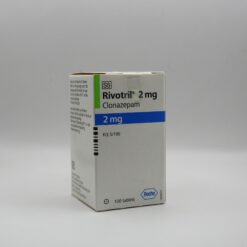Serdep (50mg tablet x 30)
R484.40
Serdep is a brand name for a medication containing the active ingredient sertraline, which is used to treat depression, anxiety disorders, and other mental health conditions. Sertraline works by increasing the levels of a neurotransmitter called serotonin in the brain, which can improve mood, sleep, appetite, and energy levels. Serdep comes in tablet form, with a typical dose being 50mg once a day, taken with or without food. This medication should only be taken as directed by a healthcare professional and should not be stopped abruptly without medical advice.
Serdep is a brand name for the antidepressant medication known as sertraline. It belongs to a class of drugs called selective serotonin reuptake inhibitors (SSRIs) and is used to treat depression, anxiety disorders, obsessive-compulsive disorder (OCD), post-traumatic stress disorder (PTSD), and premenstrual dysphoric disorder (PMDD).
Dosage:
The recommended starting dosage of Serdep is 50mg once a day, taken orally with or without food. The dosage may be increased gradually, in increments of 50mg, to a maximum of 200mg per day, depending on the individual’s response to the medication and the severity of their condition. The dosage may be adjusted by a healthcare professional based on the individual’s age, medical history, and other medications they are taking.
Usage:
Serdep works by increasing the levels of serotonin in the brain, which helps to regulate mood, sleep, and appetite. It is typically prescribed as a long-term treatment, and it may take several weeks for the full therapeutic effect to be achieved. It is important to take the medication exactly as prescribed, even if the individual feels better before the medication is finished. Abruptly stopping the medication can lead to withdrawal symptoms, and the medication should be gradually tapered off under the supervision of a healthcare provider.
Serdep should not be taken by individuals who are allergic to sertraline or any other ingredients in the medication. It should also be used with caution in individuals with liver or kidney problems, seizures, or a history of mania or bipolar disorder.
The side effects of Serdep can include nausea, diarrhea, insomnia, headache, dizziness, and sexual dysfunction. These side effects are usually mild and go away after a few weeks of treatment. If the side effects persist or become severe, the individual should consult with their healthcare provider.
In summary, Serdep is an antidepressant medication that is commonly used to treat a range of mental health conditions. When taken as prescribed, it can help to alleviate symptoms and improve the individual’s quality of life. However, it should be used with caution and under the supervision of a healthcare provider.
| Weight | 0.06 kg |
|---|---|
| Dimensions | 3 × 3 × 1 cm |
Related products



